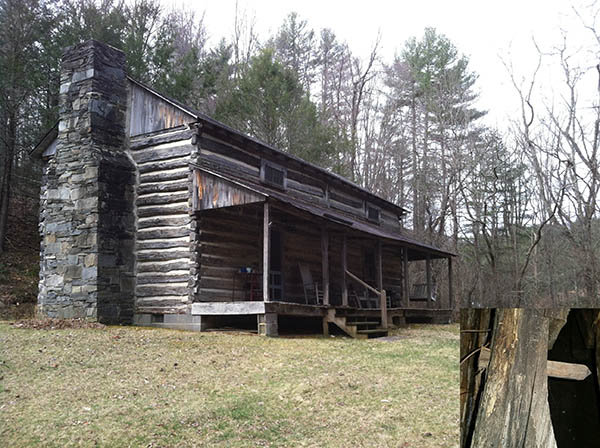
Phoenix Mountain Arts is a fine woodworking business in Lansing, N.C. The three principals are Nicholas Slaton, his wife Michelle, and father Joe. Since 2010, they have been taking local sourcing to a new level, acquiring and deconstructing 19th century cabins in the mountains in rural Ashe County to obtain rare, high quality hardwoods for their work. The process of salvaging the wood is difficult, expensive and time-consuming, but well worth it for the right property. This special wood adds an extra dimension to what Phoenix Mountain Arts can offer customers and keeps the deep heritage of Appalachia alive in a creative way.
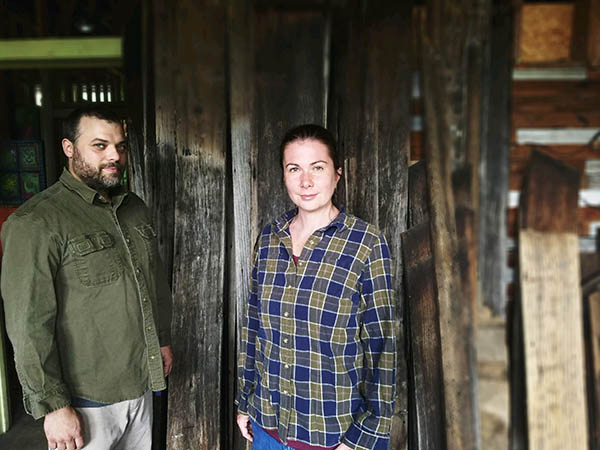
Appalachian settlers in the early 19th century built their houses with the only material available: wood harvested from their own land. This was often white oak for the foundation and first floor, lighter weight chestnut for the upper floors, and an assortment of red oak, maple, or poplar if that was what was on the property. Close to 200 years later, many of these buildings are still standing and have aged depending on how well they were built and maintained. The structures that survive have the wisdom of those original craftsmen built into them and are a testament to their architectural skill. In the inset photo at the top of the page, you see the wooden peg corner construction from the first 1840s cabin that Nicholas and Michelle worked with.
Assessment and planning: Each deconstruction project begins with an on-site assessment with the property owner to see the quantity, quality, type, and value of material on offer, along with the overall condition of the structure. “If it can be saved, that is always your first choice” says Nicholas. If saving isn’t possible and the material is optimal for furniture making, a detailed project management process begins: define the scope of work; create a schedule; calculate cost projections of time, labor, and equipment. Determining how the building was constructed is important, as the disassembly procedure is most often construction in reverse, or “backwards building.” Even with accumulated experience it can be easy to underestimate how long a project will take, as no two projects are the same.
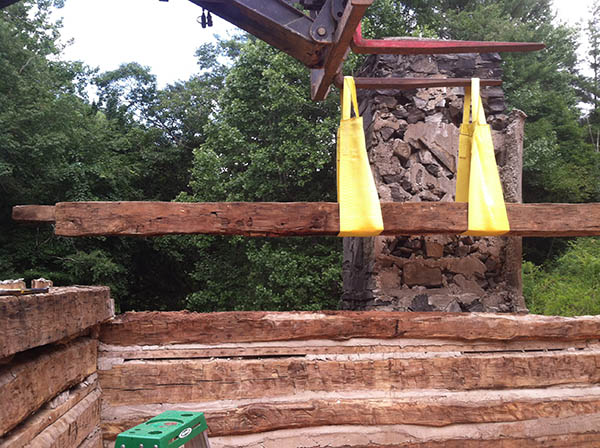
Logistics: The equipment list can include a telescoping material handler, trailer, and tractor, all the way down to hand tools, wedges, and mallets. Rain exposure will negatively affect the old wood, so short-term and long-term storage must be procured. Is it down a back road and up a mountain? Usually it is. Careful planning is required to get all needed equipment onsite and in position.
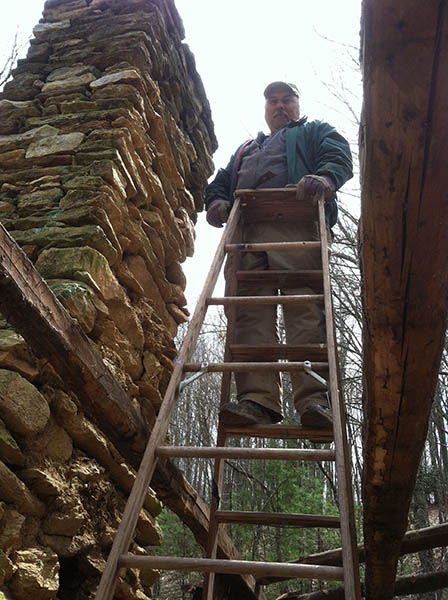
Disassembly: Prior to disassembly, everything in the interior is removed, including cabinets, walls, furniture and anything left behind by the last residents. Everything old and original is saved. Reverse construction then begins with breaking the roof seal, then removal of the tins, decking, rafters, joists, and top plate. This sequence makes for slower progress but is essential for preserving the quality and condition of material. In terms of weight and size, the greatest challenge are the top plates and first floor joists, which can run the full length of the cabin and weigh many hundreds of pounds.
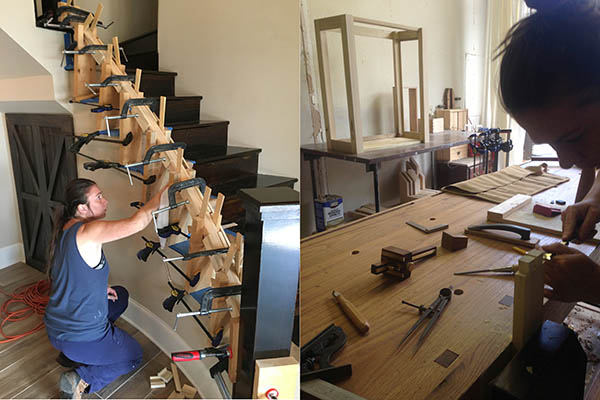
Sorting: Most of the material is designated for a specific build and is stacked and stickered according to a cut list. Material is then sorted by color, age, grain pattern, and presence of nail holes, saw marks, or other characteristics. Certain parts lend themselves to certain projects. Tongue-and-groove flooring can be easily made into solid wood cabinets, wide boards can be used for case construction or flooring, and hewn beams are popular as mantels.
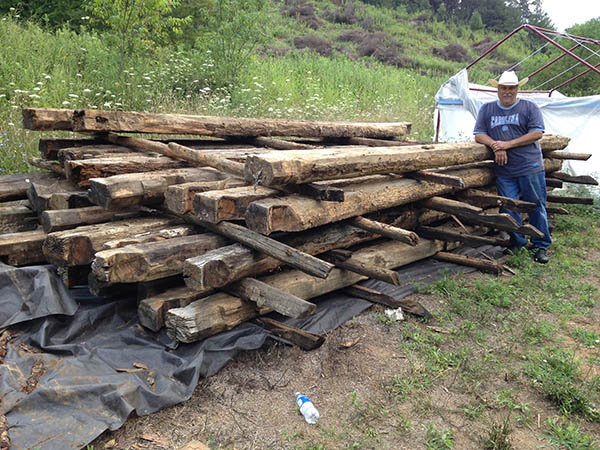
Denailing: A single nail can compromise an expensive saw blade. Before milling, any metal is identified by eye, magnet, and metal detector. Each piece is removed, taking care not to leave tool marks.
Milling: Because the supply of wood is finite, the Slatons carefully control the milling process with their own sawmill. Beams and logs are sawn to a cut list that maximizes the amount of wood recovered and gets the best cut out of each piece. Milled material moves to the shop where the parts are dimensioned and joined with hand tools or by machining. The overarching principle is to maintain the wood’s character as much as possible.
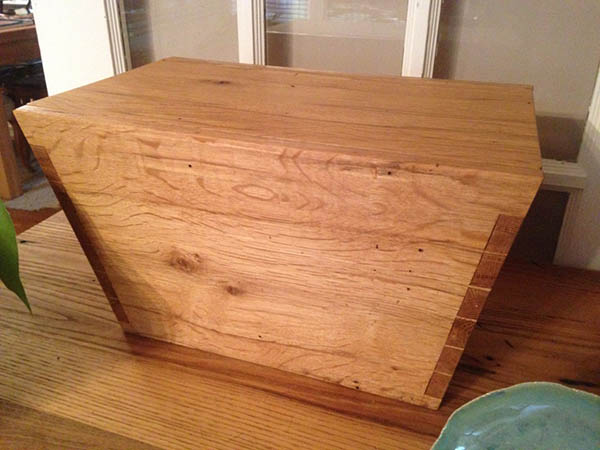
Final destination: The old and original has made its way into projects, often in people’s homes as cabinets, furniture, floors and ceilings, but also as smaller commissioned pieces. Wood cycles through the space as it’s used in projects. All the fixtures, cabinetry, trim, flooring, rafters, tin are saved. The Slatons keep 1,800 square feet in dry storage as inventory and a private collection allowing them to have access to the best.
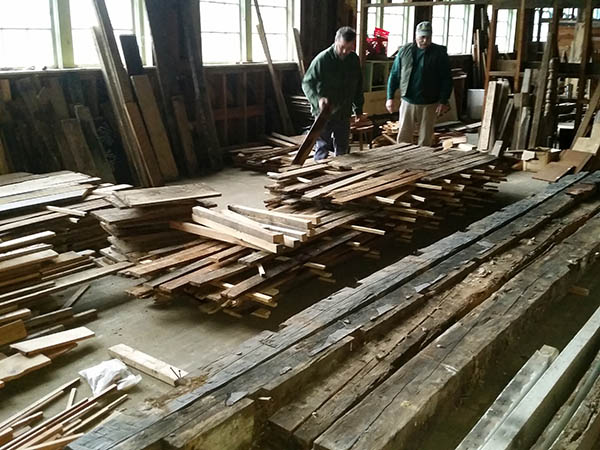
Is it worth it? The entire process is weeks of hard, dangerous, dirty work. Each time the Slatons finish a deconstruction they swear they will never do another one. When asked why they continue to consider new projects, Nicholas’ first response is to say “It’s all about the wood. It is a special experience working with wood of this age, size, and quality. It is rare and we are lucky.” When pressed to be more specific, Nicholas replies, “It’s about keeping the local history alive for those who care about it.” In the end, the clients are the lucky ones. They own a part of the Appalachian story with a very special character and cachet. The buildings may be gone, but their heritage lives on in the craftmanship from Phoenix Mountain Arts.







